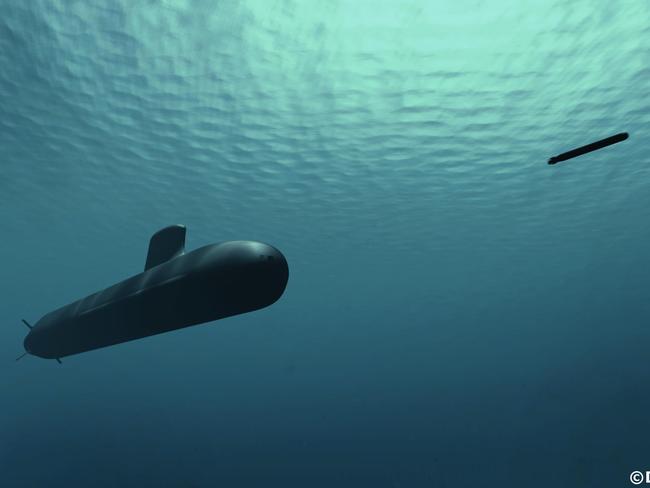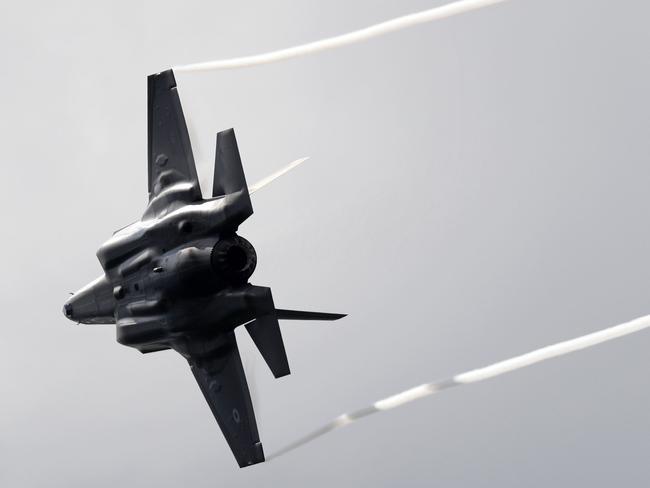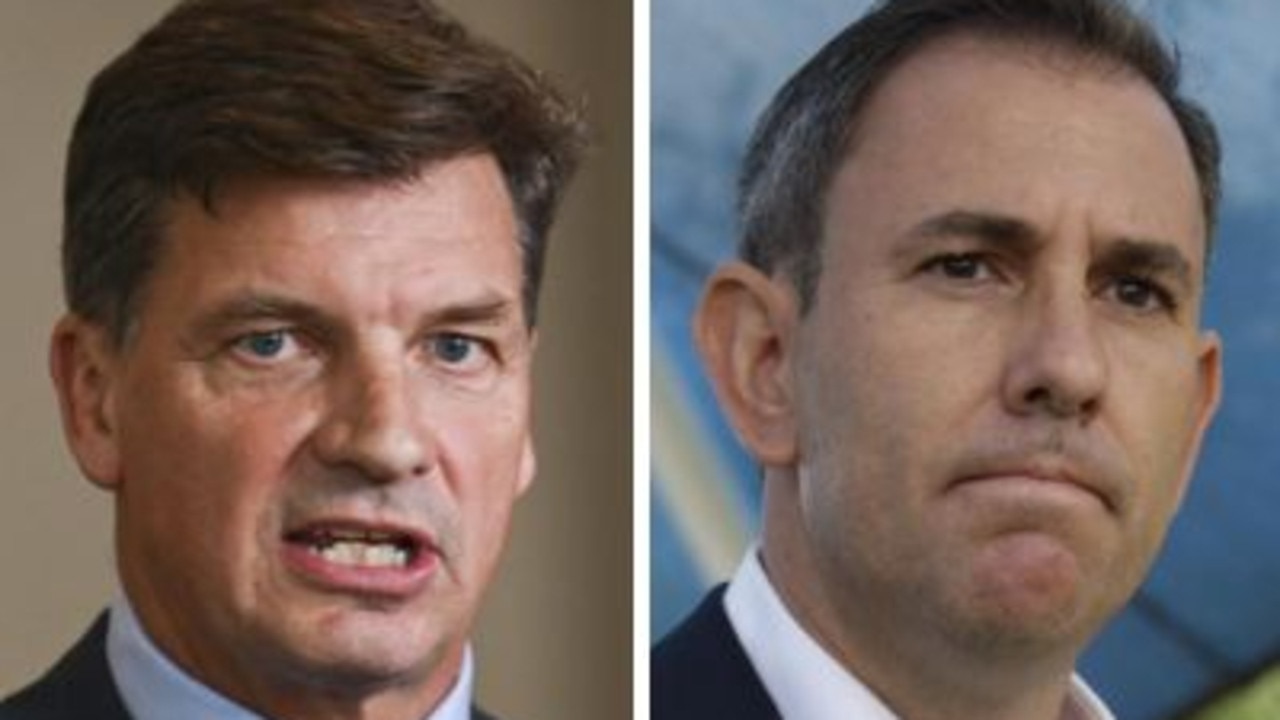The controversial history of Lockheed Martin, the firm powering Australia’s new submarines
IT STUFFED up monumentally with the problem-plagued F-35 jet fighter, but Australia just gave this company a big fat new contract anyway.
Fed Budget
Don't miss out on the headlines from Fed Budget. Followed categories will be added to My News.
THE world’s biggest defence firm — and one of the most controversial — will deliver combat technology to power Australia’s new submarines.
Defence Industry Minister Christopher Pyne announced on Friday that Lockheed Martin had been given the $1.4 billion contract to supply the combat systems for 12 new submarines.
The company is the same one behind the heavily criticised F-35 Joint Strike Fighter project, which saw its price tag almost double to $396 billion due to budget blowouts and technical problems.
The late former president of Lockheed also once admitted to paying millions of dollars to foreign government officials to bribe them to buy its military fighter jets.
The Australian arm of the American defence giant defeated US rival Raytheon in a deal to fit out the $50 billion vessels.
It means 200 jobs will be created at the Lockheed Martin facility at Mawson Lakes in Adelaide during the design and build phase.
Defence Minister Marise Payne released a statement saying: “By partnering with an Australian-based company with strong links to the US, we will ensure that we get the best Australian and US technology, while ensuring that our sensitive technology is protected.”
The job will involve delivering the combat system that connects all the different components of the submarine so they work together.
This includes sensors such as sonar, communications, navigation and weapons, which include torpedoes and missiles.
It’s an important role and critical to the future of Australia’s defence.
A CRUCIAL STEP
Now that the combat systems contract has been awarded to Lockheed Martin, the design and construction of Australia’s new submarines can begin.
Australia awarded French contractor DCNS the main contract last April to design and build its next generation of submarines. The vessels will be a scaled-down, conventionally powered version of France’s 4700-tonne nuclear-fuelled Shortfin Barracuda.

The Lockheed contract was a crucial step towards acquiring the new subs, second in importance only to the selection of DCNS as submarine designer. DCNS had urged a speedy decision on combat system integrator so it could get on with the job of designing the new subs.
The Barracudas will replace Australia’s ageing diesel and electric-powered Collins submarines.
France’s Minister of Defence, Jean-Yves Le Drian, and the boss of DCNS both welcomed the decision to give the combat contract to Lockheed Martin.
But Australia’s experience with the Collins submarines shows delivering the combat system is no trivial task.
Of all the many Collins problems, which included excessive noise and unreliable engines and generators, the combat system was by far the most intractable, costly and time consuming to fix.
Eventually Defence just gave up trying to fix the original system and opted for a replacement based on the system aboard US nuclear subs.
The government has stipulated the new subs be equipped essentially with what’s on the Collins, the US AN/BYG-1 and with the Mark 48 torpedo as the primary weapon.

CONCERNING HISTORY
Australia will be hoping that its submarine contract will not be beset by the problems that have plagued Lockheed Martin’s F-35 Joint Strike Fighter project.
The aircraft was supposed to be America’s next generation stealth jet but instead became the “costliest weapons program in human history”, according to Mark Thompson in Time Magazine.
Many might recognise Lockheed as the lead contractor delivering the F-35 program, which was launched in 2001 but saw its price tag almost double to $396 billion due to budget blowouts and technical problems.
Independent military and policy think tank Air Power Australia labelled the jet fighter a “jackass of all trades and masterful of none” during a Senate inquiry this year.
Others have made damning comments about the aircraft’s lack of power, manoeuvrability and ability to “see” behind itself.
Australia is one of a number of countries who have committed to buying the US fighter jets. We will get 72 of the aircraft at a cost of $72 billion.

The first F-35s were supposed to be operational by mid-2015, but the first aircraft are not expected to arrive in Australia until 2018. The first squadron will be in operation by 2021 and all jets will be up by 2023.
The jet fighters have been plagued with glitches including problems with its radar, being vulnerable to lightning strikes and extreme heat, and complications that increased to risk of neck injury to lightweight pilots when they ejected from the aircraft.
A CONTROVERSIAL COMPANY
Some have suggested that Lockheed Martin has used its influence in the US to keep its programs going including the F-35 fighter jet program.
The company has been described as “too big to fail” because of how dominant it is in the US defence industry.
In 2014 it pulled in $US25 billion worth of contracts from the Pentagon — or nearly 9 per cent of the total. It has also spent more than $US66 million on lobbying since 2011.
Because of the role it plays in providing crucial jobs across America, it has developed influence among US politicians, with members of Congress reportedly reading Lockheed-written talking points word-for-word in hearings.
Some worry this means the Pentagon will have less leverage if it wants to end or scale back programs for technical or cost reasons.
Lockheed’s power is all the more remarkable considering how close it came to collapsing in 1971 when rising development costs for the L-1011 jet almost sent it bankrupt.
The US government bailed out the company (then known as Lockheed Aircraft Corp before it merged with Martin Marietta in 1995) with a $US250-million loan. However, a subsequent investigation found Lockheed had bribed several foreign governments to buy its military fighter jets.
During a US Senate hearing, then-president Carl Kotchian, admitted he paid millions to government officials in Japan, Italy and the Netherlands. This included $US12 million in payments to Japanese politicians and businessmen. The affair became one of the biggest bribery scandals in the US.
Kotchian’s statements eventually led to the imprisonment of Japan’s prime minister and political upheaval in other countries. The Senate probe also found that pay-offs, bribes and kickbacks were part of doing business overseas for many US companies.
The US government later passed laws against Americans bribing foreign government officials.
In his memoir, Kotchian reportedly said the pay-offs were common throughout the 1960s and 1970s, and no American laws were broken.
“If we were back in those times, I’d do it again,” Kotchian said in an interview with the Associated Press in 1978. “In present times, with the change in attitude and standards that are being applied now, I don’t think that I would.”
Originally published as The controversial history of Lockheed Martin, the firm powering Australia’s new submarines


